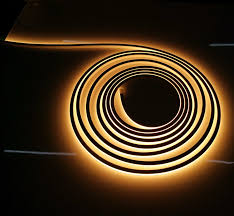It does not mean no there is even a way you can mix and match them with other different LED strip lights wholesale that are available. This is so important because you need to understand what each type of LED strip light offers in terms of its technical specifications and individual features, as this will help ensure that everything works well together.
The voltage is one of the main factors to think about. The voltage of most LED strip lights is 12V or 24v; if you mix the two in not a proper way, it may cause strange mismatches or failures. Eg a 12V strip connected to a 24V supply can fry the LEDs, and similarly a 24V strip won't work properly on a 12Vs power source. If you want a nice effect when it loops, every strip has to use the same voltage.
Wattage per meter, another very important parameter. Power Consumption: An LED strip light power consumption will vary depending on the type of flexible and strip-length. typically range between 4.8W to 14,4w per meter Mixing strips requires you to match their power requirements nicely so as not to overburden the power supply. Choosing a power supply that provides enough capacity to handle the total wattage of all strips is knowledge and helps ensure safe operation.
Color temperature as well as CRI (color rendering index) are a few of the base points that should be considered in order to make unified picture for all your lighting diagram. Color Temperatures: Measured in Kelvin (K), LED strip lights come in various color temperatures, ranging 2700-6500K from warm white to cool white. Unless pre-planned for specific applications, mixing color temperatures in strips can be quite the unfortunate effect. Additionally, the CRI that shows how well light displays color should be relatively same for all strips to give a uniform look in terms of colors. Where accurate color rendering is desired like in retail or art displays, strips with High CRI (90+) are best.

Mixing strips of different brightness levels can result in patchy lighting due to differences in lumens per meter. For example, 5050 would typically offer about 1000 lumens per meter and a 3528 strip might only be as low as just over 400 lumen/m. This ensures the same brightness levels and consistent light output throughout.
But often the challenge is in how to connect LED strip lights from different manufacturers or product lines. Additional adapters, or modifications will be needed due to differences in connectors, control protocols and physical dimensions. This is what can done by using a single brand or product line, as it makes thing easier in terms of installation and maintenance.
When thinking about control systems, they must be compatible with the dimmers or controllers being used. There are LED strip lights available out there that can work with certain particular dimmers, like TRIAC or PWM and even some other kinds of proprietary controls may be needed in case. Failing to mix incompatible strips will result in flickering or malfunction. Smooth dimming and control with any of the strips is possible when using a uniform control system across all your lights.
Architectural lighting offers one of the best examples where separate parts need mixed, actual LED strip lights. So now with care full planning and behind a scene some technical knowledge we ensure that all strip works togatherifestyles. For example, It is like you can use CRI high LED strips on some places for display and low energy efficient LED strip in existing lights.
The example given by the US department of energy is that, the conversion to LED lighting can save about 75% in a commercial-space-energy-consumption. By being energy efficient, spending on compatible and high-quality LED strip lights can Meanwhile be cost-effective because of the savings they bring. All this benefits are only helpful if every single piece works together.
In other words, if you are paying attention at the finer details (voltage and wattage requirements, color temperature specification in Kelvin K of LED lights is alright) then mixing two different brands or types of warm white strips to get a total lumen output make so much sense. By taking these into account, users can produce an efficient lighting setup where performance and individual aesthetics are well-balanced.